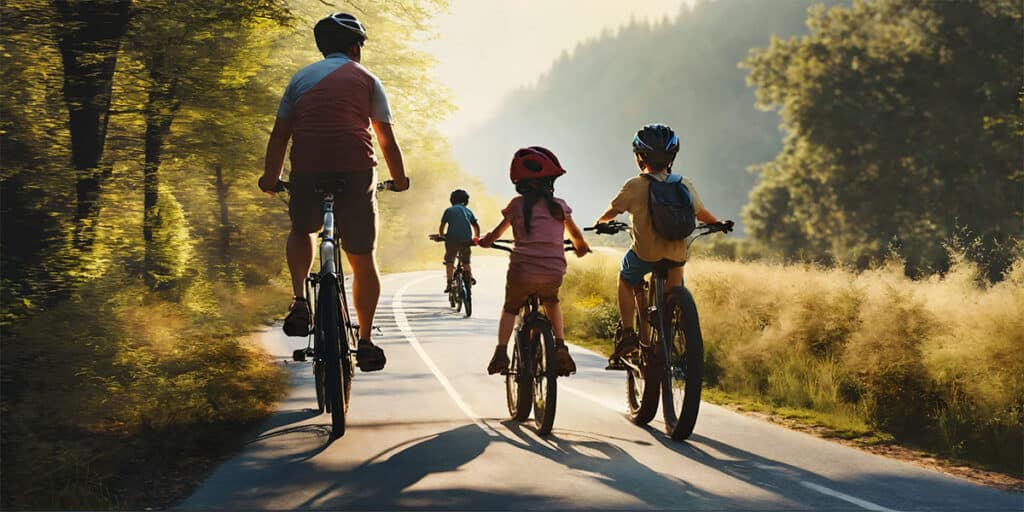Camping under the starlit sky, surrounded by the whispers of nature, offers a unique escape from the hustle and bustle of daily life. For families managing diabetes, the adventure of camping brings with it the challenge of maintaining a healthy diet while away from the comfort and predictability of home kitchens. Yet, it also presents an unparalleled opportunity to explore diabetes-friendly meals that are not only nutritious but also add to the joy of outdoor living.
This guide aims to illuminate the path to successful camping with diabetes, focusing on meals that cater to dietary needs without compromising taste or the overall experience.
Crafting Diabetes-Friendly Campfire Meals
When the wilderness calls, the allure of a campfire under the open sky is irresistible. Cooking over a campfire is an experience that can be both fun and practical for managing diabetes. The key is to plan meals that are high in fiber, lean protein, and healthy fats, which help regulate blood sugar levels. Interesting facts to note include the benefits of incorporating whole grains, such as quinoa and barley, which are not only hearty but also beneficial in managing glycemic control. Vegetables grilled over the fire not only retain more nutrients but also acquire a delightful smoky flavor that enhances the meal.
The benefits of these meals extend beyond their nutritional value. For example, the act of gathering around a campfire to cook and share a meal fosters family bonding and reduces stress, which is crucial in managing diabetes. Furthermore, the physical activities associated with camping, like setting up tents and hiking, combined with healthy eating, can have a positive impact on blood sugar levels.
Ingredients That Make a Difference
Incorporating the right ingredients into your camping meals can significantly enhance your experience, especially for individuals managing diabetes. The foundation of a diabetes-friendly diet lies in selecting foods that support blood sugar control and overall health. Let’s delve into why these specific food groups are pivotal and how they can transform your camping meals into a powerhouse of nutrition and taste.
Lean Proteins: Stabilizing Blood Sugar with Every Bite
Lean proteins, such as chicken, fish, and legumes, are essential for a well-rounded diet, particularly for those with diabetes. These foods do more than just satisfy hunger—they provide the body with a steady source of energy without causing drastic spikes in blood sugar levels. For campers, lean proteins can be easily incorporated into meals, whether it’s grilled chicken skewers over the campfire or a hearty bean stew. These proteins are not only versatile but also pack a nutritional punch, offering essential nutrients that support muscle repair and growth after a day full of outdoor activities.
Whole Grains: The Fiber-Filled Path to Glycemic Control
Whole grains like brown rice, whole grain bread, and oats are invaluable for managing diabetes. They are high in fiber, which slows down the absorption of sugar into the bloodstream, helping to maintain stable blood sugar levels. Fiber also promotes feelings of fullness, reducing the likelihood of overeating. When camping, whole grains can serve as the base for various meals, from morning oatmeal enriched with nuts and berries to a side of brown rice with grilled vegetables. These foods are not only practical for their nutritional benefits but also for their convenience and ease of preparation in a camp setting.
Healthy Fats: Nourishing the Heart and Body
Healthy fats found in avocados, nuts, and seeds are crucial for heart health and maintaining good blood sugar levels. These fats are not only important for their calorie density, which is beneficial in an energy-intensive activity like camping, but also for their ability to regulate blood sugar. Adding avocado slices to a sandwich, snacking on a handful of almonds, or incorporating seeds into a salad are simple ways to include healthy fats in your camping meals. These ingredients add flavor and texture, making meals more enjoyable while supporting your health goals.
Fresh Vegetables and Fruits: Nature’s Nutritional Powerhouses
Vegetables and fruits are rich in vitamins, minerals, and fiber, making them indispensable in a diabetes-friendly diet. They provide a myriad of health benefits, from boosting the immune system to improving digestive health. For campers, fresh produce can be used in a variety of dishes, from colorful vegetable kebabs to fruit salads. Packing a range of vegetables and fruits not only ensures a balance of nutrients but also brings vibrancy and freshness to meals, enhancing the camping experience.
| Food Item | Nutritional Benefit | Why It’s Good for Diabetes |
|---|---|---|
| Whole Grain Wraps | High in fiber | Helps manage blood sugar levels |
| Almonds and Walnuts | Rich in healthy fats and protein | Stabilizes blood sugar and provides sustained energy |
| Grilled Chicken | Lean protein source | Supports muscle health without spiking blood sugar |
| Quinoa Salad | High in protein and fiber | Ensures a slow and steady release of glucose |
| Berries | Low glycemic index, high in antioxidants | Minimizes blood sugar spikes and supports overall health |
| Carrot and Celery Sticks with Hummus | Healthy snack rich in fiber and protein | Keeps hunger at bay and blood sugar levels stable |
Balancing Fun and Health in the Great Outdoors
Camping is not just about braving the elements; it’s a unique opportunity to harmonize fun and health, particularly for families navigating the challenges of diabetes management. The emphasis on crafting diabetes-friendly meals amidst the wilderness serves as a cornerstone for a safe and enjoyable experience. Yet, the adventure doesn’t stop at nutrition. The holistic camping journey—from meal prep to physical exertion under the open sky—plays a pivotal role in both physical health and emotional rejuvenation.
The Art of Campfire Cooking
The act of preparing meals in the great outdoors offers a canvas for culinary creativity, especially important when prioritizing diabetes-friendly diets. Cooking over a campfire, with its primitive charm, brings families together in a shared task that is both educational and entertaining. The method of using foil packets, for example, is not just a convenient cooking technique; it’s a lesson in nutrition and adaptability. By allowing each family member to choose their mix of ingredients, it personalizes dining and ensures that everyone’s health needs are met without sacrificing the joy of eating together. This hands-on approach to meal preparation also demystifies diabetes management for younger family members, integrating important dietary considerations into a fun and memorable activity.
Physical Activity: A Natural Insulin
Beyond the camp kitchen, the natural setting of a camping trip encourages a variety of physical activities that are beneficial for managing diabetes. Hiking through forested trails, swimming in a lake, or simply exploring the wilderness can significantly impact blood sugar control. These activities stimulate muscle cells, which in turn use glucose more efficiently, acting as a natural form of insulin. This not only helps in maintaining glycemic balance but also promotes cardiovascular health, which is often a concern for those with diabetes. The physical exertion associated with outdoor activities also has the added benefit of weight management, an important aspect of diabetes care.
Mental Health and Well-Being in Nature
Perhaps one of the most understated benefits of camping is its impact on mental health. The tranquility of nature, the removal from the constant connectivity of modern life, offers a profound break for the mind. This disconnection allows for a reconnection with the present moment, fostering mindfulness and reducing stress. Stress management is crucial in diabetes care, as stress hormones can affect blood glucose levels. The simple joys found in the natural world—whether it’s the crackle of a fire, the rustling of leaves, or the stillness of a starry night—serve to soothe the mind, offering a sense of peace and well-being that is as important as any dietary or physical regimen in managing diabetes.
Balancing fun and health in the great outdoors, therefore, is not just about adhering to a diet or engaging in exercise. It’s about creating a comprehensive experience that nurtures the body, mind, and spirit. The act of camping, with its inherent blend of activity, relaxation, and nutritional mindfulness, provides a unique opportunity to enhance diabetes management while forging deeper connections with both nature and family.
Camping Fun with Diabetes-Friendly Meals: Your FAQs Answered
How can I store insulin safely while camping?
Use insulated bags with ice packs to keep insulin at the correct temperature without freezing it.
What are the best snacks for managing blood sugar while hiking?
Opt for mixed nuts, cheese with whole grain crackers, or fresh fruit for balanced snacks.
How do I manage blood sugar spikes when my meal routine changes during camping?
Monitor your blood sugar levels more frequently and adjust meal times and insulin doses accordingly.
Can I still enjoy traditional camping treats like s'mores?
Yes, but consider alternatives like dark chocolate and use whole grain graham crackers to reduce sugar intake.
What's the best way to ensure I'm drinking enough water while camping?
Carry a reusable water bottle and set reminders to drink regularly, especially before, during, and after physical activities.
How can I make meal prep easier while camping?
Pre-prepare and portion meals at home. Consider pre-cooked, vacuum-sealed meals that only require reheating.
Are there any quick and easy diabetes-friendly campfire recipes?
Yes, foil packet meals with a mix of lean proteins, vegetables, and whole grains are both easy and nutritious.
What should I do if I experience hypoglycemia while camping?
Always carry glucose tablets or gel and a carbohydrate snack. Inform your camping companions about how to assist in case of an emergency.
How do I balance carb intake when I'm more active during camping?
Adjust your meal and snack carb content based on activity level, and monitor your blood sugar levels to prevent lows.
What are some key items to include in a diabetes care kit for camping?
Include your blood glucose monitoring system, insulin and cooling pouch, emergency snacks, a first aid kit, and copies of your medical ID and emergency contact information.
Citations
- “Exercise and Type 2 Diabetes: The American College of Sports Medicine and the American Diabetes Association: Joint Position Statement” found in Diabetes Care, emphasizing the critical role of physical activity in managing Type 2 Diabetes.
- “The Impact of Nut Consumption on Blood Lipid Levels: A Pooled Analysis of Randomized Controlled Trials” in Journal of the American College of Cardiology, highlighting the benefits of including nuts in the diet for heart health, particularly relevant for those with diabetes.
- “Mediterranean Diet and Type 2 Diabetes Risk Reduction: A Review” from Diabetologia, which details how a Mediterranean diet, rich in vegetables, whole grains, and healthy fats, can significantly reduce the risk of developing type 2 diabetes.
- “Stress and Diabetes: A Review of the Links” in Diabetes Spectrum, offering insights into how stress management can be a crucial aspect of diabetes care.








